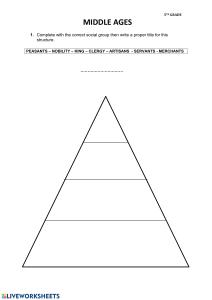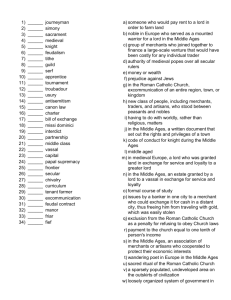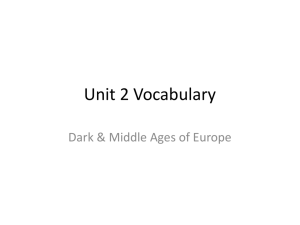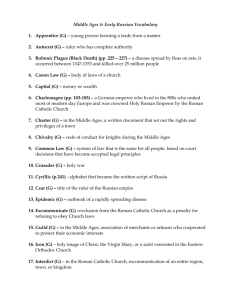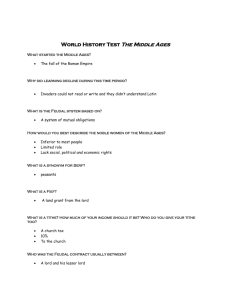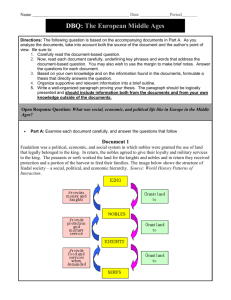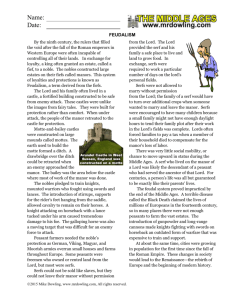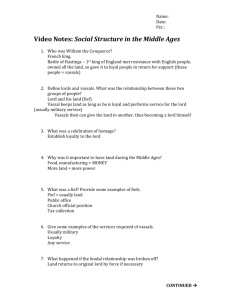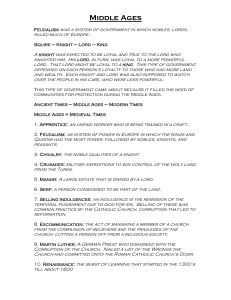Chapter 7 Study Guide - morganhighhistoryacademy.org
advertisement
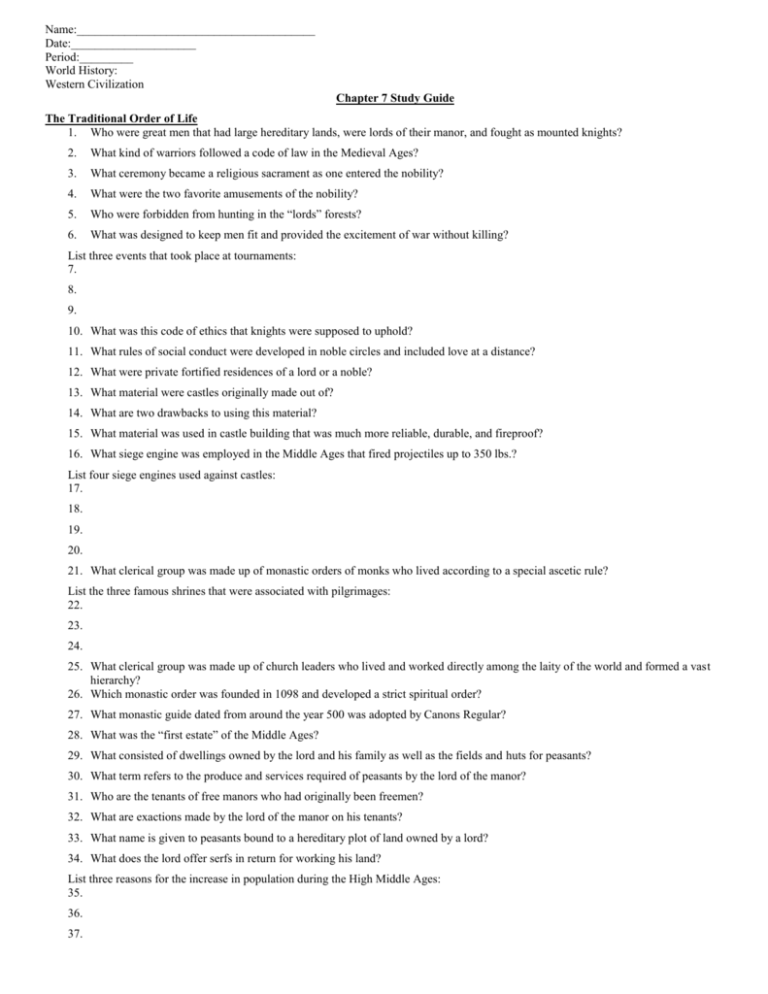
Name:________________________________________ Date:_____________________ Period:_________ World History: Western Civilization Chapter 7 Study Guide The Traditional Order of Life 1. Who were great men that had large hereditary lands, were lords of their manor, and fought as mounted knights? 2. What kind of warriors followed a code of law in the Medieval Ages? 3. What ceremony became a religious sacrament as one entered the nobility? 4. What were the two favorite amusements of the nobility? 5. Who were forbidden from hunting in the “lords” forests? 6. What was designed to keep men fit and provided the excitement of war without killing? List three events that took place at tournaments: 7. 8. 9. 10. What was this code of ethics that knights were supposed to uphold? 11. What rules of social conduct were developed in noble circles and included love at a distance? 12. What were private fortified residences of a lord or a noble? 13. What material were castles originally made out of? 14. What are two drawbacks to using this material? 15. What material was used in castle building that was much more reliable, durable, and fireproof? 16. What siege engine was employed in the Middle Ages that fired projectiles up to 350 lbs.? List four siege engines used against castles: 17. 18. 19. 20. 21. What clerical group was made up of monastic orders of monks who lived according to a special ascetic rule? List the three famous shrines that were associated with pilgrimages: 22. 23. 24. 25. What clerical group was made up of church leaders who lived and worked directly among the laity of the world and formed a vast hierarchy? 26. Which monastic order was founded in 1098 and developed a strict spiritual order? 27. What monastic guide dated from around the year 500 was adopted by Canons Regular? 28. What was the “first estate” of the Middle Ages? 29. What consisted of dwellings owned by the lord and his family as well as the fields and huts for peasants? 30. What term refers to the produce and services required of peasants by the lord of the manor? 31. Who are the tenants of free manors who had originally been freemen? 32. What are exactions made by the lord of the manor on his tenants? 33. What name is given to peasants bound to a hereditary plot of land owned by a lord? 34. What does the lord offer serfs in return for working his land? List three reasons for the increase in population during the High Middle Ages: 35. 36. 37. List the two staple peasant foods: 38. 39. List three advancements that resulted in agricultural improvement: 40. 41. 42. Towns and Townspeople 43. What kind of settlement was given a charter to hold a market or fair and was the economic hub of the area? 44. What name was given to adventurous former serfs who became long distance traders? 45. What were merchants and artisans living in walled cities called? 46. What does the German word “Burg” mean? 47. What laws enforced social hierarchies through placing restrictions on clothing and food? 48. What name is given to an association of craftsmen in a particular trade? 49. What standards were established by guilds? List the three stages of the guild training program: 50. 51. 52. Schools and Universities 53. What was the first important Western university? 54. Who established this university in 1158? 55. What is the second oldest surviving university in the world and is the oldest in the English-speaking world? 56. What educational system consisted of the trivium and the quadrivium? List the three areas of study in the trivium: 57. 58. 59. List the four areas of study in the quadrivium: 60. 61. 62. 63. 64. What theological text was written by St. Augustine of Hippo and studied by Medieval students? 65. What method of study was based on logic and dialectic and dominated the medieval schools? 66. What were the only books available to university students during the Middle Ages? 67. Who was the prominent medieval French scholastic philosopher, theologian, and prominent logician? Women in Medieval Society 68. Who was responsible for protecting and disciplining married women during the Middle Ages? 69. Who managed the lord’s estate while he was away at war or at court? List three types of women that sought sanctuary in a Convent: 70. 71. 72. The Lives of Children 73. What percentage of children died before age five during the Middle Ages? 74. Who assumed adult responsibilities early in life and labored in the fields as soon as they physically could during the Middle Ages? 75. Whose responsibility was it to prepare a child for useful and gainful work?
